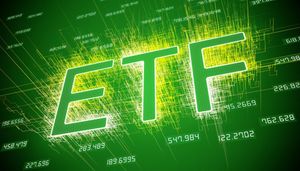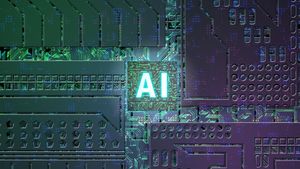
OpenAI, a leader in artificial intelligence, has recently unveiled a series of audacious infrastructure initiatives poised to redefine the AI landscape. At the heart of these plans are strategic partnerships with tech giants SoftBank (TYO: 9984) and Oracle (NYSE: ORCL) to construct five new data centers across the United States, alongside a monumental $100 billion chip deal with Nvidia (NASDAQ: NVDA). These moves, part of OpenAI's ambitious "Stargate project," signal an unprecedented investment in AI computing power, promising to accelerate the development of next-generation AI models while sending ripples through financial markets and raising significant questions about industry concentration and market valuations.
The sheer scale of these endeavors—projected to involve hundreds of billions of dollars in investment and gigawatts of computing capacity—underscores a pivotal moment in the AI arms race. As companies vie for dominance in artificial intelligence, access to vast computational resources becomes paramount. OpenAI's aggressive expansion strategy, solidified on September 24, 2025, positions it to cement its leadership, but also intensifies scrutiny from regulators and market observers concerned about the sustainability and competitive implications of such colossal capital outlays.
Unpacking the Stargate Project: Data Centers, Chips, and Strategic Alliances
The "Stargate project," initially announced in January 2025 with a target investment of up to $500 billion over four years, has rapidly gained momentum. On September 24, 2025, OpenAI, Oracle Corp. (NYSE: ORCL), and SoftBank Group Corp. (TYO: 9984) formalized plans to establish five new AI data centers across the U.S. These facilities are critical components of OpenAI's strategy to build an unparalleled AI infrastructure. SoftBank (TYO: 9984) and OpenAI are jointly developing two data centers in Lordstown, Ohio, and Milam County, Texas. Concurrently, OpenAI and Oracle (NYSE: ORCL) are collaborating on three additional sites located in Shackelford County, Texas, Doña Ana County, New Mexico, and an undisclosed Midwest location, alongside a potential 600-megawatt expansion near the flagship Stargate campus in Abilene, Texas, which already leverages Oracle Cloud Infrastructure.
These five new sites, combined with the existing Abilene campus and ongoing projects with CoreWeave, are expected to boost Stargate's total planned capacity to nearly 7 gigawatts (GW), pushing the total investment beyond $400 billion within three years. This accelerated timeline positions the companies ahead of schedule to achieve their initial goal of 10 gigawatts by the end of 2025. Construction is already underway in Lordstown, Ohio, with operations anticipated to commence next year, and the SoftBank (TYO: 9984)-OpenAI sites aiming for 1.5 gigawatts within 18 months. Beyond the technological advancements, these projects are slated to create over 25,000 direct on-site jobs and tens of thousands more across related industries nationwide, providing a significant economic boost.
Complementing this data center expansion is a staggering $100 billion chip deal with Nvidia (NASDAQ: NVDA). Nvidia (NASDAQ: NVDA) is set to invest up to $100 billion in OpenAI, structured as a multi-phase equity investment tied to the progressive expansion of AI infrastructure. In return, OpenAI has committed to purchasing millions of Nvidia's (NASDAQ: NVDA) GPUs for its next-generation AI infrastructure, aiming for at least 10 gigawatts of AI data centers. The initial phase of this agreement involves a $10 billion injection from Nvidia (NASDAQ: NVDA) to support a 1 GW data center, slated for construction in the second half of 2026 and designed to utilize Nvidia's (NASDAQ: NVDA) forthcoming Vera Rubin chips. This unique arrangement provides OpenAI with crucial funding and preferential access to highly sought-after processors, while guaranteeing Nvidia (NASDAQ: NVDA) a substantial, long-term customer for its cutting-edge AI hardware.
The immediate market reactions to these announcements have been mixed. Nvidia's (NASDAQ: NVDA) stock initially surged by as much as 4.4% to a record high, reflecting its solidified dominance in AI chips and contributing to an approximate 37% gain for the year as of September 22, 2025. However, the following day, September 23, 2025, saw a slight dip of 1.8% in Nvidia's (NASDAQ: NVDA) shares, indicative of growing investor anxiety regarding AI funding sustainability and market valuations. Oracle's (NYSE: ORCL) stock also experienced a decline of 2.24% on September 24, 2025. The sheer scale of Nvidia's (NASDAQ: NVDA) investment in OpenAI has, furthermore, triggered significant antitrust concerns among legal experts and policymakers, with worries about potential market imbalances and impacts on Nvidia's (NASDAQ: NVDA) other customers. The U.S. Justice Department and Federal Trade Commission had already agreed in mid-2024 to closer scrutiny of the roles played by Microsoft (NASDAQ: MSFT), OpenAI, and Nvidia (NASDAQ: NVDA) in the AI sector, although Nvidia (NASDAQ: NVDA) has publicly affirmed its commitment to serving all clients equally.
Winners and Losers in the AI Infrastructure Race
OpenAI's strategic maneuverings are poised to create clear winners and losers across the technology and financial sectors. OpenAI itself stands as a primary beneficiary, securing the computational backbone essential for its ambitious AI development. The $100 billion chip deal with Nvidia (NASDAQ: NVDA) guarantees access to millions of advanced GPUs, a critical advantage amidst high demand and potential supply constraints. This, coupled with the "Stargate" data center expansion, positions OpenAI for accelerated breakthroughs and strengthens its market leadership in AI model development.
Nvidia (NASDAQ: NVDA) is another undisputed winner. The $100 billion deal ensures massive, long-term sales of its GPUs and related equipment to a leading AI innovator, significantly bolstering its revenue streams and backlog for years to come. By investing in OpenAI, Nvidia (NASDAQ: NVDA) deepens its ties with a crucial customer, reinforcing its near-monopoly in AI compute and extending its influence across the AI ecosystem. This strategic alignment helps fund the accelerated buildout of AI infrastructure, a powerful long-term tailwind for Nvidia's (NASDAQ: NVDA) business.
Oracle (NYSE: ORCL) also emerges as a significant player in the AI infrastructure space. Its reported $300 billion, five-year cloud infrastructure deal to provide 4.5 GW of data center capacity for OpenAI's "Stargate" project is transformative. Analysts predict this could more than double Oracle's (NYSE: ORCL) data center revenues, with significant revenue generation expected from 2027. This partnership elevates Oracle Cloud Infrastructure (OCI) as a core provider for frontier AI workloads, marking a major competitive leap in the intensely contested cloud market. SoftBank (TYO: 9984), as a key financial backer and co-developer of two new data center sites, strategically pivots towards large-scale AI infrastructure, leveraging its financial prowess to position itself at the forefront of the AI revolution.
Conversely, major cloud competitors like Microsoft (NASDAQ: MSFT), Google (NASDAQ: GOOGL), and Amazon (NASDAQ: AMZN) face intensified pressure. While Microsoft (NASDAQ: MSFT) remains a significant OpenAI investor and partner, OpenAI's extensive deals with Oracle (NYSE: ORCL) and SoftBank (TYO: 9984) for data center expansion and its direct chip deal with Nvidia (NASDAQ: NVDA) suggest a move towards "compute independence" and a multi-cloud strategy, potentially lessening OpenAI's sole reliance on Microsoft Azure. Google (NASDAQ: GOOGL) Cloud and Amazon Web Services (AWS) (NASDAQ: AMZN) face heightened competition in providing AI infrastructure and services. These tech giants are proactively investing hundreds of billions in their own AI capabilities, custom chips (like Google's (NASDAQ: GOOGL) TPUs and Amazon's (NASDAQ: AMZN) Inferentia/Trainium), and strategic partnerships to maintain their market share and relevance in the rapidly evolving AI landscape.
A New Era of AI Infrastructure and Market Dynamics
OpenAI's colossal infrastructure investment marks a defining moment, underscoring an unprecedented demand for computational power that is reshaping the entire technology industry. The estimated $100 billion investment by Nvidia (NASDAQ: NVDA) into OpenAI, aimed at deploying at least 10 gigawatts of Nvidia (NASDAQ: NVDA) systems, highlights an "insatiable demand" for compute. This figure is staggering, with 10 gigawatts equating to the peak electricity demand of New York City and requiring millions of GPUs, effectively doubling Nvidia's (NASDAQ: NVDA) projected chip shipments for 2025. This move is emblematic of broader trends: escalating compute requirements for AI, Nvidia's (NASDAQ: NVDA) continued GPU dominance, and massive capital expenditure (CapEx) by tech giants.
The ripple effects of this alliance are substantial. It solidifies the "super gap" of both OpenAI in AI model development and Nvidia (NASDAQ: NVDA) in AI hardware. For Nvidia (NASDAQ: NVDA), it ensures a massive, long-term customer for its most advanced chips, while for OpenAI, it guarantees access to cutting-edge computing resources crucial for maintaining its competitive edge. However, this close alignment raises concerns among legal experts. Competitors of OpenAI, such as Anthropic, Google (NASDAQ: GOOGL), and Meta (NASDAQ: META), may face disadvantages if Nvidia (NASDAQ: NVDA) prioritizes OpenAI with faster delivery schedules or better pricing for its in-demand GPUs. This could make it harder for rivals like AMD (NASDAQ: AMD) in chips or other AI model developers to scale, leading to potential vendor lock-in and ecosystem control.
The sheer scale of these deals has immediately triggered significant antitrust concerns from legal experts and policymakers. Nvidia's (NASDAQ: NVDA) dominant position in the GPU market (controlling more than half) and its financial ties with a leading AI developer like OpenAI fuel fears of an uneven playing field. Critics worry that the deal could consolidate too much power in the hands of a few companies, potentially leading to preferential treatment for OpenAI in terms of access to limited GPU supplies. The U.S. Department of Justice (DOJ) and the Federal Trade Commission (FTC) have already warned against major tech firms leveraging existing dominance to control emerging AI markets and have launched antitrust probes into Nvidia (NASDAQ: NVDA). Concerns about "circular transactions," where Nvidia (NASDAQ: NVDA) invests in OpenAI which then buys Nvidia's (NASDAQ: NVDA) GPUs, also echo parallels to the dot-com bubble of the late 1990s, raising questions about inflated market valuations.
Despite these concerns, many argue that the current AI boom differs from past speculative bubbles. Unlike some dot-com ventures, AI companies are already generating billions in revenue, providing "revenue validation" rather than just speculative "eyeballs." Furthermore, the current investments are creating significant "infrastructure moats" that provide tangible competitive advantages. The substantial and demonstrable demand for AI compute power, directly tied to scaling AI models and enterprise adoption, differentiates it from purely speculative bubbles. The strategic nature of these investments is seen as a bet on AI becoming a fundamental driver of economic revolution, akin to past foundational utilities like railroads and power grids.
The Road Ahead: Accelerating AI, Shifting Markets, and New Challenges
OpenAI's unprecedented infrastructure investments signal a future of accelerated AI development, potentially leading to groundbreaking advancements, but also intensifying market competition and raising critical questions about industry concentration and environmental sustainability. In the short term (current to late 2026), OpenAI's infrastructure push will alleviate its "compute crunch," enabling the deployment of more capable models and expanded services. The Nvidia (NASDAQ: NVDA) partnership solidifies the chipmaker's dominance, securing a major customer and potentially granting OpenAI preferential access to highly sought-after GPUs. However, this growing alliance has already attracted scrutiny from antitrust regulators, raising questions about fair competition.
Looking further ahead (post-2026 and beyond), the most significant long-term implication is the potential acceleration of AI development, particularly towards Artificial General Intelligence (AGI). With dedicated, massive computing resources, OpenAI can train increasingly complex models, pushing the boundaries of what AI can achieve. This exponential increase in compute power has historically driven significant AI progress, and OpenAI's investment suggests a belief that this trend will continue. OpenAI CEO Sam Altman has explicitly stated that this infrastructure will enable "new AI breakthroughs," potentially reshaping industries and daily life.
These colossal investments will also lead to shifting market dynamics and increased concentration. The deep interdependence between leading AI developers and hardware providers, particularly Nvidia (NASDAQ: NVDA), could lead to a more consolidated industry structure where a few dominant players control the most advanced AI capabilities and the underlying compute. This necessitates strategic pivots from competitors; Google (NASDAQ: GOOGL) and Meta (NASDAQ: META) are likely to double down on their own infrastructure investments and custom chip development, while cloud providers like Microsoft (NASDAQ: MSFT) Azure and Amazon (NASDAQ: AMZN) AWS will need to offer more specialized AI services and flexible consumption models. OpenAI itself is pivoting towards a "full-stack" approach, even exploring AI-powered consumer devices.
Emerging market opportunities and challenges are also on the horizon. The immense demand for electricity to power these mega data centers creates significant opportunities for companies in renewable energy, power generation, and specialized cooling solutions. However, it also presents substantial environmental challenges regarding energy consumption and water usage. The rise of "sovereign AI" initiatives, focusing on localized AI models for specific regions, also creates new market niches. Furthermore, OpenAI's strategy involves significant debt financing and potentially leasing chips from Nvidia (NASDAQ: NVDA), indicating innovative financial models to manage astronomical capital expenditure.
The AI Revolution: A New Economic Frontier
OpenAI's unprecedented infrastructure investments with SoftBank (TYO: 9984), Oracle (NYSE: ORCL), and Nvidia (NASDAQ: NVDA) represent a pivotal moment in the history of artificial intelligence. These deals, particularly the $500 billion "Stargate" project, underscore an unprecedented scale of capital commitment, positioning AI compute as the foundational layer of the future economy. The key takeaway is that "compute is king," and OpenAI is aggressively securing the resources necessary to maintain its lead in the AI arms race, ensuring access to cutting-edge hardware and facilitating co-optimization of technology roadmaps. This also highlights a strong drive for national leadership in AI, with the "Stargate" project heavily focused on U.S. data center development.
Moving forward, the market will be defined by an intensified AI race, benefiting infrastructure providers like Oracle (NYSE: ORCL) and Nvidia (NASDAQ: NVDA), but also placing immense strain on energy grids and raising environmental concerns. Nvidia's (NASDAQ: NVDA) central role will be further entrenched, solidifying its backlog and market share. However, the colossal scale and strategic importance of these partnerships could attract increased antitrust scrutiny from regulators, potentially shaping the competitive landscape. The lasting impact will be seen in accelerated AI progress, economic transformation through job creation and infrastructure development, and the establishment of a long-term competitive moat for OpenAI.
Final thoughts on significance and lasting impact point to a profound reshaping of industries and economies. These investments form the bedrock for pushing the frontiers of AI capabilities, potentially leading to new breakthroughs and the widespread deployment of advanced AI systems. The "Stargate" project alone is projected to create hundreds of thousands of jobs and significantly boost the U.S. AI and data infrastructure sector. However, the sheer financial commitment and environmental demands highlight persistent challenges that will require innovative solutions. The vision of "trillions of dollars" in AI infrastructure signals that the AI revolution is far from over, and its demands will continue to reshape global industries and economies.
Investors should closely monitor several key indicators in the coming months. Firstly, watch for concrete updates on the execution and deployment progress of the new "Stargate" data centers, especially the first gigawatt of Nvidia (NASDAQ: NVDA) systems expected in H2 2026; any delays could signal underlying challenges. Secondly, keep an eye on regulatory developments, particularly any antitrust investigations concerning Nvidia's (NASDAQ: NVDA) increasing influence, as these could impact the terms or future expansion of these deals. Thirdly, observe news regarding power grid upgrades, new energy projects (especially renewables), and innovations in energy-efficient AI hardware and data center cooling, as energy will be a critical bottleneck. Fourthly, assess OpenAI's monetization and profitability, balancing massive investments against its ability to convert technological leads into sustainable revenue. Finally, monitor competitive responses from other hyperscalers and rival AI developers, as well as any further synergistic moves from SoftBank (TYO: 9984) and Oracle's (NYSE: ORCL) cloud infrastructure growth.
This content is intended for informational purposes only and is not financial advice


















